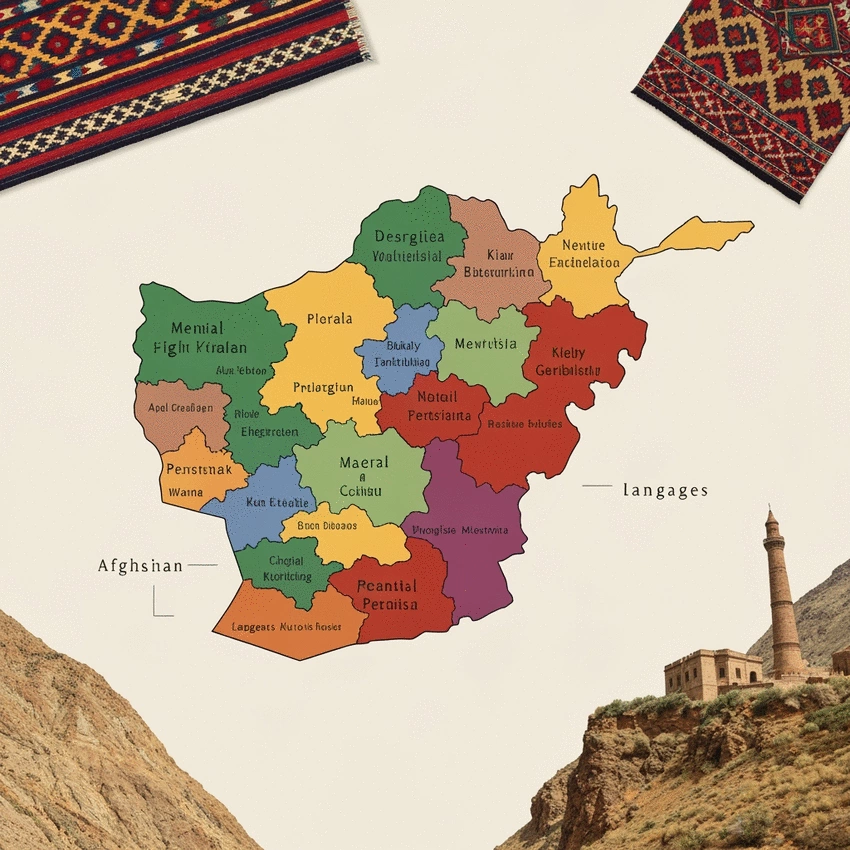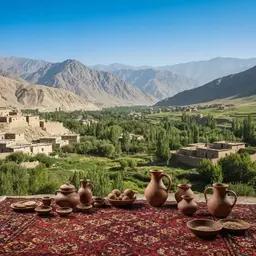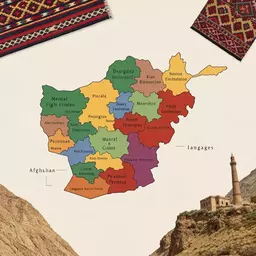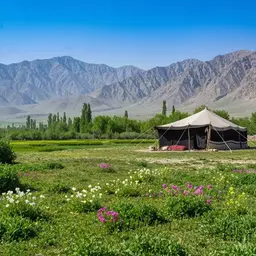Geography's Role in Afghan Culture
By Khalid Rahimi / Nov 19
Engaging with the intricate demographics of Afghanistan reveals how deeply culture and identity shape the nation. These insights not only enhance our understanding but also promote appreciation for the rich tapestry that is Afghanistan.
The visual below illustrates the demographic profiles of key Afghan provinces, highlighting major ethnic groups and population figures.
Population: 4.6 million
Major Groups: Pashtun, Tajik
Population: 1.9 million
Major Group: Tajik
Population: 1.2 million
Major Group: Pashtun
Population: 700,000
Major Group: Hazara
Understanding Afghanistan’s demographics is essential for grasping the social, political, and economic intricacies of the nation. The diverse ethnic backgrounds and cultural traditions shape not only local governance but also influence national policies. I often find that by exploring these demographics, we can appreciate the unique identities that contribute to Afghanistan's rich tapestry.
The significance of population diversity is not just an academic topic; it directly affects our everyday interactions and experiences. It helps us recognize the different perspectives and histories that inform community dynamics. For anyone interested in the culture and geography of Afghanistan, these insights are invaluable!
Afghanistan is home to a variety of ethnic groups, with each contributing to the nation’s cultural richness. According to Wikipedia's Demographics of Afghanistan, understanding this population diversity allows us to better appreciate the complexities of societal interactions and the nuances that define Afghan life. From the bustling streets of Kabul to the serene landscapes of Bamyan, every region showcases its unique demographic identity.
Each group has its own historical narrative and cultural significance, influencing everything from local governance to artistic expression. By examining these dynamics, we can gain a greater understanding of how these demographics shape Afghanistan's future.
Detailed provincial insights are crucial for meeting interests ranging from academic research to humanitarian efforts. The intricacies of governance and regional development are often tied to understanding local demographics. For example, knowing the predominant ethnic groups in a province can guide policymakers in addressing community needs effectively.
Moreover, as I delve into these insights through my work at Afghanistan Map, I'm constantly reminded of how interconnected our societies are. By highlighting these details, we can promote awareness and respect for Afghanistan's diverse heritage.
When we look at Afghanistan’s provinces, we uncover a vibrant mosaic of ethnic groups that have coexisted for centuries. Each province has its major ethnic representation, which reflects not just the geographical landscape but also the historical migrations and settlements over time. For instance, the Pashtun presence is predominant in provinces like Kandahar, while Tajiks are notably found in places such as Panjshir and Badakhshan.
Delving into these details allows us to appreciate the cultural vibrancy of each area. I encourage readers to explore how these groups have influenced local traditions, customs, and governance structures. It’s fascinating to see how the past continues to shape the identity of Afghanistan today!
While the major ethnic groups capture much attention, it’s equally important to recognize the minority ethnic groups that enrich Afghanistan's cultural landscape. Groups such as the Gujars and Pamiris have unique customs and traditions that sometimes go unnoticed. Their struggles and contributions to the broader Afghan culture deserve acknowledgment.
Addressing the challenges faced by these groups not only fosters inclusivity but also broadens our understanding of Afghanistan's societal dynamics. This exploration encourages us to celebrate the rich diversity that exists within each province!
Current population figures are essential for anyone looking to understand the demographic trends across Afghanistan's provinces. The UNFPA provides valuable data on Afghanistan's population, which can help piece together a clearer picture of provincial populations. By utilizing sources such as international reports and governmental surveys, we can gain insights into these figures.
| Province | Population | Major Ethnic Group |
|---|---|---|
| Kabul | 4.6 million | Pashtun, Tajik |
| Herat | 1.9 million | Tajik |
| Kandahar | 1.2 million | Pashtun |
| Bamyan | 700,000 | Hazara |
As these statistics illustrate, each province has its unique demographic profile that greatly influences local culture and governance. Understanding these numbers helps create a foundation for recognizing how demographics affect socio-economic development in Afghanistan.
Recent years of conflict and instability have significantly shaped Afghanistan’s demographics. Migration trends, whether due to displacement or the search for better opportunities, have altered the population landscape across several provinces. These shifts often lead to a blending of cultures but can also introduce tensions. The World Bank's Afghanistan Development Update provides further context on the socio-economic impact of these changes.
By analyzing these changes, we gain insight into how communities adapt and respond to new challenges. Each story of migration adds another layer to our understanding of Afghan society, highlighting resilience amidst adversity.
When exploring demographic specifics, major provinces like Kabul, Herat, and Kandahar stand out due to their population densities and cultural richness. For instance, Kabul is not only the political heart of Afghanistan but also a melting pot of various ethnicities that contribute to its vibrant cultural scene.
These provinces illustrate how geography influences cultural interactions and societal development. Each visit to these areas reveals layers of history and dynamic cultural exchanges, reflecting the heart and soul of Afghanistan.
Here’s a brief recap of the key points discussed so far:
Afghanistan is home to several major ethnic groups, including Pashtuns, Tajiks, Hazaras, Uzbeks, and Turkmen. Each group contributes significantly to the nation's diverse cultural landscape.
Understanding provincial demographics is crucial for effective governance, policy-making, and humanitarian efforts. It helps tailor development strategies, promote social cohesion, and ensure that the unique needs of diverse communities are met within each province.
Yes, besides the major groups, minority groups such as the Gujars and Pamiris also play a significant role in Afghanistan's cultural tapestry, bringing their unique customs, traditions, and historical narratives.
Recent conflicts have led to significant demographic shifts, primarily through migration and displacement. These changes have altered population distributions across provinces, leading to cultural blending but also sometimes contributing to social tensions.
Ongoing research is vital for informed policy-making, cultural education, and promoting social cohesion. It provides current data and insights into the realities of various communities, helping to create an inclusive and respectful society.
As we delve into Afghanistan’s provincial demographics, it’s clear that understanding these intricacies is crucial. The rich ethnic diversity and multitude of languages showcase a country that, while facing challenges, is also a tapestry of cultural heritage. Each province tells its own story through its people, traditions, and interactions, making it essential for anyone interested in exploring this remarkable landscape.
Recognizing the significance of these demographics impacts not just social interactions but also political and economic frameworks. This awareness can lead to more informed decisions that promote unity and respect among Afghanistan's diverse populations.
Continuous research into Afghanistan's demographics is vital for several reasons. First, it aids in policy-making that reflects the needs and realities of various communities. Second, it fosters education that embraces cultural narratives, encouraging students and locals to learn about their neighbors. Finally, it plays a significant role in promoting social cohesion, allowing individuals to appreciate the rich mosaic of identities within Afghanistan.
These efforts can create a space where different groups feel valued and represented, paving the way for a peaceful coexistence that is reflective of Afghanistan’s heritage.
Currently, Afghanistan faces various ethnic tensions that can sometimes overshadow its cultural diversity. However, there are also numerous opportunities to foster understanding and collaboration among its diverse groups. By acknowledging and respecting these differences, communities can harness their cultural richness to build stronger social ties.
Engaging in dialogues, community events, and cultural festivals can act as a bridge between various ethnic groups, allowing them to share their stories and traditions. This collaborative spirit is essential for creating a cohesive society that values every voice.
If you've found this exploration of Afghan demographics enlightening, I encourage you to delve deeper! There are many avenues to engage with this subject, from academic studies to community involvement. Consider attending local cultural events or visiting Afghanistan Map for insightful articles that expand on these themes. Engaging with these topics helps foster a greater understanding of the complexities at play in Afghanistan’s society.
Your engagement with these subjects can contribute to a broader awareness that ultimately supports unity and understanding within diverse communities.
As you absorb the insights from this article, I encourage you to share what you've learned about Afghanistan’s demographics. Every individual plays a role in understanding and appreciating cultural diversity, whether through conversations with friends, social media, or community initiatives. Reflect on how these insights can be applied in your context, fostering a spirit of inclusivity and respect for all.
Let’s work together to celebrate the beauty of diversity and the stories that make Afghanistan a unique and fascinating country!
Here is a quick recap of the important points discussed in the article:

 Geography's Role in Afghan Culture
In the intricate tapestry of Afghanistan, geography plays a pivotal role in shaping cultural identit
Geography's Role in Afghan Culture
In the intricate tapestry of Afghanistan, geography plays a pivotal role in shaping cultural identit
 Understanding Afghanistan’s Provincial Demographics
Engaging with the intricate demographics of Afghanistan reveals how deeply culture and identity shap
Understanding Afghanistan’s Provincial Demographics
Engaging with the intricate demographics of Afghanistan reveals how deeply culture and identity shap
 Visiting Afghanistan: Seasonal Travel Tips
When planning your journey to Afghanistan, understanding the climate and timing of your visit is cru
Visiting Afghanistan: Seasonal Travel Tips
When planning your journey to Afghanistan, understanding the climate and timing of your visit is cru